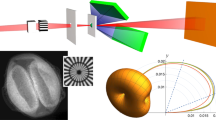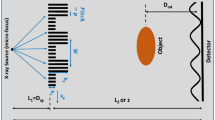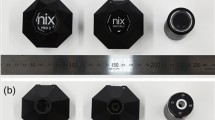Abstract
IF a fine beam of homogeneous cathode rays is sent nearly normally through a thin celluloid film (of the order 3 × 106 cm. thick) and then received on a photographic plate 10 cm. away and parallel to the film, we find that the central spot formed by the undeflected rays is surrounded by rings, recalling in appearance the haloes formed by mist round the sun. A photograph so obtained is reproduced (Fig. 1). If the density of the plate is measured by a photometer at a number of points along a radius, and the intensity of the rays at these points found by using the characteristic blackening curve of the plate (see Phil. Mag., vol. 1, p. 963, 1926), the rings appear as humps on the intensity-distance curves. In this way rings can be detected which may not be obvious to direct inspection. With rays of about 13,000 volts two rings have been found inside the obvious one. Traces have been found of a fourth ring in other photographs, but not more than three have been found on any one exposure. This is probably due to the limited range of intensity within which photometric measurements are feasible.
Similar content being viewed by others
Article PDF
Author information
Authors and Affiliations
Rights and permissions
About this article
Cite this article
THOMSON, G., REID, A. Diffraction of Cathode Rays by a Thin Film. Nature 119, 890 (1927). https://doi.org/10.1038/119890a0
Issue Date:
DOI: https://doi.org/10.1038/119890a0



